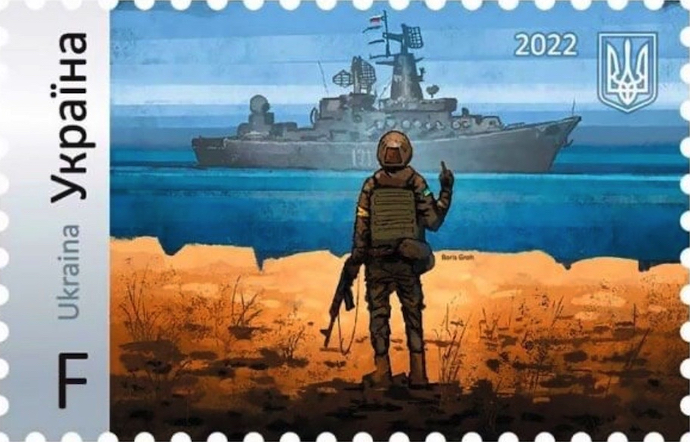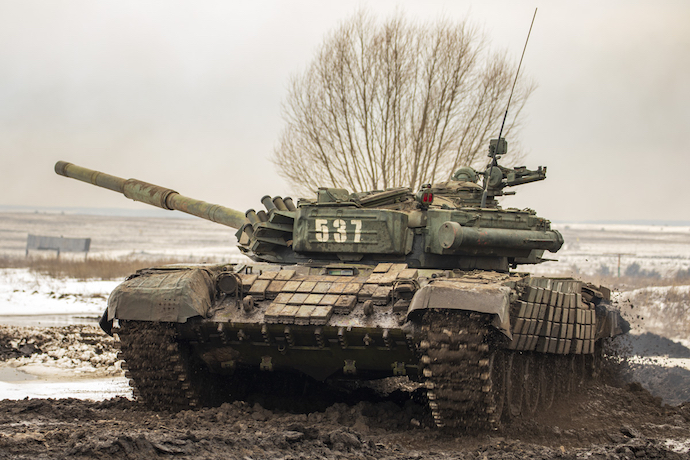
Why Russia has had Such a Disastrous 12 months
In 2022, when Russia’s ramshackle armies trundled into Ukraine, very few gave the defenders a chance. After all, they’d spent the past eight years unsuccessfully trying to fight off pro-Russian separatists (heavily backed by Moscow) in the east of their country. Meanwhile, Russia had been ostentatiously developing and modernising its armed forces and using them with decisive effect in Syria.
Analysts – focused on Russia’s supposed “hybrid” “approach to war” had failed to appreciate two things. First, shiny gear and buzzwords do not make an army great. Second, a nation in arms, united, motivated, and well-led makes a very formidable opponent.
Russian forces looked good on parade but, behind the paint and uniforms, the military was corroded from within by corruption, graft, and inefficiency.
The men manning its modern equipment were led by generals who had failed to obey the essential precept that planning and preparation prevent poor performance. Troops were not trained properly, or at all, and had little or no idea of what they were required to do.
The one-year anniversary of Russia’s full-scale invasion of Ukraine is a grim milestone. It marks a year of killing, destruction, terror, loss, and pain. It also marks the simple yet empowering realisation: Ukraine is still here.
Разом до перемоги!#SlavaUkraini pic.twitter.com/Kn1HssdIUs
— Rihards Kols (@RihardsKols) February 24, 2023
Such planning should and does involve a deep appreciation of the environment into which they are about to plunge – this is called “intelligence preparation of the battlefield.” By the way, while Western generals might sagely comment on these matters, they made exactly the same mistakes in their disastrous wars in Iraq and Afghanistan.
The signs were there early on when units of Russia’s elite airborne troops were annihilated at Hostomel airfield near Kyiv. It took just a month for Russia’s chaotic and ramshackle columns to be thrown back from Kyiv.
A highly regarded Russian tank brigade was defeated by a Ukrainian armoured unit a tenth of its size at the battle of Chernihiv – just one of several embarrassing defeats for Moscow’s war machine.
All at sea (and in the air)
Ukrainian air defences were as well organised and prepared as the Russian Air Force was inadequate in all respects. They dispersed their assets, ensuring the survival of most of its aircraft and – vitally – an intact and superbly efficient ground-based air defence system. This continues to defend Ukraine with panache.
Ukrainian airspace is denied to Russian aircraft, with the skies an aerial no man’s land where only drones venture. Russia continues to conduct a failing strategic air campaign against civilian targets from aircraft flying deep inside of Russia.
Even inside Russia, at its most vital and secure bases, Ukrainian drone attacks have forced Russia’s most capable bombers to seek safety.

In the maritime domain, Ukraine didn’t just manage to sink the flagship of Russia’s Black Sea Fleet, it was also able to retake Snake Island, which is not only an iconic symbol of Ukrainian resistance but a vital asset in the battle for the western Black Sea.
Russian ships venture out now rarely, and usually only to fire their cruise missiles at civilian targets before scurrying back to ports to find themselves under Ukrainian attack.
What to expect
Having won the battle of Kherson and retaken a poorly defended Kharkiv region in a lightning assault, the lines have been drawn for the next, and decisive stage.
The war has – for now – devolved into a First World War-style slogging match, where artillery dominates.
Russia is now capitalising on its only advantage: sheer numbers of poorly trained troops and mercenaries. It has been said that quantity has a quality all its own, but in modern warfare, there are serious limits to the validity of that axiom. It is true only if that quantity can be protected by some form of armoured mobility and protection (apart from deep trench systems) on a battlefield saturated by artillery.

Western assistance has been vital and will be critical in two major respects. First, Ukraine needs to strengthen its air and ground defences and reconstitute them with help from NATO. Western tanks, missiles, and especially precision rocket systems like the brutally effective HIMARS, have allowed Ukraine to counter Russian advantages in artillery.
Second, as Ukraine has taken fearful casualties including and especially in its most experienced units, training will become more and more vital. As Russia discovered early in the war, equipment is of little use unless troops have been properly trained to use it. This is especially so in combined arms warfare, the extremely difficult task of coordinating infantry, tanks, artillery, and air power.
Ukraine will counterattack, probably in the spring, and it will need all the help it can get if it is to drive Russian forces back to its borders.
Drawing a parallel with the Second World War where the ethics for Britain and her allies were clear, this is the “good war” of our generation. Over the past year, it has been well fought by the men and women defending their people, country, and culture. They are also defending what remains of the international order.
Having defeated Russian forces at the battles of Kyiv, Kharkiv, and Kherson, Ukrainian forces now need to stave off the counterattack and demonstrate to a carefully watching West that they can retake and secure their country. Their success over the next few months will define the shape of the rest of the war, determining whether victory will come this year, or whether this will be a long and even more grinding conflict.
Last week, General Mark Milley, the Chairman of the Joint Chiefs of Staff, while stating that Russia has already lost strategically, argued that neither side were likely to prevail this year. If nothing else, Ukraine has demonstrated that during this phase of the war, it can and will surprise us, generals, analysts, and all.
They will do so again this year.
This article was originally published on The Conversation. Read the original article.

